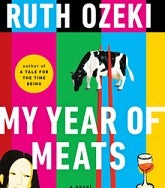
Sometimes life imitates art. Recent research by a College of Arts and Sciences faculty member dives into how environmental toxicities in literature can help us understand real-life impacts.
Sarah Preston, a career instructor in the English department, received $35,000 from the prestigious American Council of Learned Societies to explore how literature from underrepresented authors portrays advertising that promotes pesticides and carcinogenic substances, from hair dye to toxic spills.
“I was looking at the ways that creative fiction and authors who are already contributing to the human side of these stories of environmental justice are bringing in advertising in order to critique these systems, and expose these entanglements,” Preston said.
Preston’s dissertation, “A State of Want: Advertising and Toxicity in Environmental Justice Literature,” analyzes works by acclaimed authors Helena María Viramontes, Thomas King, and Ruth Ozeki, whose writing explores the themes of environmental justice and the effects of material toxicity on marginalized communities.
The authors are all from underrepresented populations, which are most affected by environmental injustice.
One of the works Preston analyzes is Viramontes’s short story “Miss Clairol,” in which the main character succumbs to advertising by dying her hair to look like the models in advertisements. But the stolen at-home hair dye kits she uses are linked to higher cancer rates and respiratory illnesses.
“Helena María Viramontes’s stories were all published over a 20 year timespan, and you can see a progression with the characters in the way they handle advertising,” Preston says.
Viramontes’s other works also address themes of environmental justice, including her novels Under the Feet of Jesus and Their Dogs Came with Them.

In King’s novel The Back of the Turtle, the protagonist works for a chemical company responsible for a toxic spill called “The Ruin,” which its public relations team tries to conceal. But when the protaganist returns to his home on the Smoke River Indian Reserve, he finds that spill has killed everything in the area.
“Seeing how the PR team is working to cover this up hits on issues of slow violence in a way that things are permeating for a long time,” Preston says. “So ‘The Ruin’ had that immediate effect that then has all these residual things happening.”

Ozeki similarly critiques the American meat industry in the novel My Year of Meats, about a fictional show sponsored by a company whose exported meat is found to contain cancer-causing hormones.
In addition to examining literary works, Preston analyzes real-world examples of toxic entanglements. For example, she critiques a milk advertisement by the US Department of Agriculture Agency’s Women, Infants and Children (WIC) program, which includes African American and Asian American kids in a promotional video. However, around 75% of African Americans and 93% of Asian Americans are lactose intolerant, according to research.

It's not just in the literature, but actually learning how to read that in the literature can help you read it better in the world.Sarah Preston, professor of English
Preston finished her dissertation with the help of the $35,000 Mellon/ACLS Dissertation Completion Fellowship and defended it in summer 2023. Through her years of research, she has concluded that these toxic narratives are most detrimental to vulnerable communities and that advertising and material toxicity are all entwined.
“I'm really thankful for the funding that I got,” Preston said. “I've been to conferences to share and share, and it's just been great.”
—By Harper Wells, College of Arts and Sciences

